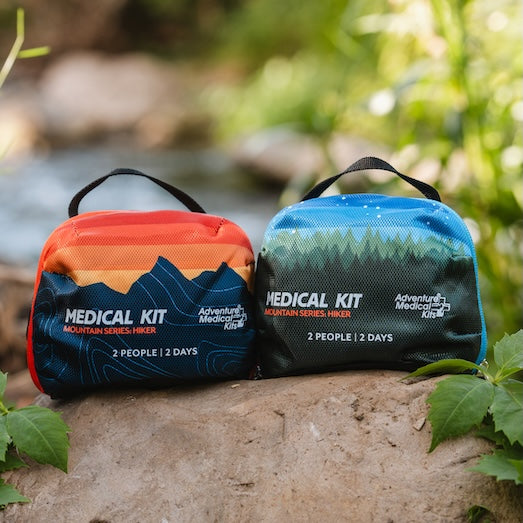By Heather Gannoe
My introduction to running was in a quiet suburban neighborhood lined with cookie cutter houses and countless cul-de-sacs. It was on these paved streets that I trained for my first 5K and eventually my first four full marathons. For years I pounded the monotonous pavement roads and cement sidewalks, and developed a love for running.
Or so I thought.
It wasn’t until I abruptly returned to my home state of Vermont that I realized what my running was missing all along: trails. The countless miles of single-track dirt through the forests of New Hampshire and Vermont were the spark that ignited my love of running into an unbridled passion. I love the constantly changing scenery, the freedom from cars and congestion, and the never-ending sense of adventure trail running provides. These days, I run 95% of my mileage on dirt trails, and will be the first to try and convince my road running friends to head off road (or, “cross over into the dark side”, as they like to joke.)
Trail running is something I think every runner should experience, even if only occasionally. But, when you head off road and onto the dirt, there are a few extra safety precautions you should take
Know Your Trails
Here in Myrtle Beach, South Carolina, we have very limited access to trails. No matter where you go in our 7 mile mountain bike/run park, you can still hear the roar of traffic, or the boats on the Intracoastal Waterway. Can you get turned around in there, and potentially double back over a path you’ve already crossed? Absolutely. But it is nearly impossible to get lost, as all four sides of the small park border main roads or neighborhoods.
That said, this is not the case for many people in other parts of the country. In some places, a trail system could border hundreds or thousands of acres of undeveloped backcountry, forest, or desert land; taking a wrong turn or getting lost could become a serious, life threatening mistake. Therefore, it is extremely important to be familiar with the trails you are running. If you aren’t, be sure carry a map (and know how to read it.) Carry a cell phone or other GPS enabled device, however, do not rely solely on that device, for technology and GPS reception can fail. Pay attention to trail markings, and obey all posted instructions.
Pick the Right Trail for Your Ability.
Not all trails are created the same. They can vary greatly in types of terrain, from wide, flat, dirt trails, to single track lined with rocks and roots. Depending on the type of trail, you may encounter very few or very many natural obstacles along the way. If it is your very first time running off road, you might not want to venture out onto an incredibly technical, steep climb, and instead may enjoy yourself more on a beginner friendly path.
Choose an appropriate trail for your fitness level and current trail running experience to make the most of your trail running experience.
Check the Weather
Being caught in a storm is not only a cause for wet, uncomfortable socks, but can actually become a dangerous situation while on a secluded trail. This isn’t to say that you shouldn’t run in inclement weather, but more so to be aware of what you might possibly face, and prepare accordingly. So before you head out for your run, check your local weather forecast.
Wear Appropriate and Protective Gear
Can you wear your road running gear on the trails? Yes…but you might not want to. Trail running shoes are designed to give you better grip on the uneven trails. Further, they are often made of more rugged materials to help protect you from rocks, sticks, or other items you may encounter on the trail.
Wearing tall socks or gaiters will help keep debris from entering your socks, as well as protect you from branches, poisonous plants, and even insect bites (like ticks). Often, the shade of the trees and change in elevation may result in drastic temperature changes, so be sure to wear or pack layers that are easy to remove or put on. Lastly, wear bright colors so you are highly visible to other runners, cyclists, or even hunters.
Bring Plenty of Hydration and Nutrition
Unlike running through urban areas with neighborhoods, public parks, and convenience stores, it is very unlikely that you will find a reliable water or nutrition source on the trail. While fresh water sources may be available, the water quality might be questionable: bacteria or parasites like giardiasis can cause miserable gastrointestinal issues. Pack more water and nutrition than you feel you may actually need, in the event that you become lost or spend more time on the trail than you expected.
Be Aware of Your Surroundings
Be aware of what is going on around you at all times. Leave your headphones and “Pokémon GO” at home, so you are able to hear the sound of approaching runners, cyclists, or even animals. Enjoy the sounds of nature instead!
Watch Your Step.
Trail running, especially on technical trails, is definitely a learned art. Taking shorter, faster steps while you run will allow you to have better control, and maintain better balance, while covering the uneven terrain. Also, don’t forget to pick up your feet! Shuffling, as many do on pavement, will likely result in a toe catching a root or a rock, and you’ll be face down on the trail before you know it. Don’t worry, it happens to the best of us.
Personal Protection
I’m always torn over whether or not to include this one in a trail safety post, as it is certainly a highly debatable and personal choice. But…consider whether or not you want to run with some sort of personal protection item. While some people do go to the extreme and run with firearms, a more common practice is running with a handheld pepper spray. The latter certainly won’t protect you from a grizzly bear or mountain lion attack (both highly unlikely, but certainly a risk in some parts of the country), but may fend off advances from aggressive dogs or even worse, attacks from fellow humans. A terrifying but unfortunately necessary thought.
Consider the areas you are running through (are there lose dogs? Unsavory people frequenting trails?) as a deciding factor as to whether or not you want to carry some sort of protection. And if you do decide to run with a form of personal protection, make sure you are well versed and comfortable in its use, otherwise you may do yourself more harm than good.
Tell Someone Where You Are Going
I know it sounds silly, as we are all adults and should be able to fend for ourselves. But if you are headed into the backcountry, or even just your small local trail: tell someone where you are going before you head out, even if it’s simply a note left at home. In addition to location, give an estimated return time so your friends or loved ones know when to expect you back. If an emergency arises and you don’t come back, this gives rescuers an idea of where to begin looking for you.
On a related note: I won’t tell you to NOT trail run alone. Sometimes the solidarity of a solo trail run can be an amazing experience, or even some much needed running therapy. However, if possible, do run with a friend or a group. Safety in numbers.
I know this post may seem overwhelming, especially to brand new trail runners. I promise these safety precautions aren’t that much more involved than what you should do prior to a road run. But the beautiful sights, exhilarating run, and endless adventures that trails provide? They are totally worth taking the extra steps.
Heather Gannoe, is an ACSM certified Exercise Physiologist who splits her time between working as a personal trainer and running coach, and writing as a blogger and author in the fitness and running industry. She’s also a mom to two young boys, and is constantly encouraging them to love the great outdoors a little more, and their video games a little less. Trail running really long distances is her true love, but she’ll never turn down an adventure. Keep up with her adventures on www.RelentlessForwardCommotion.com.














